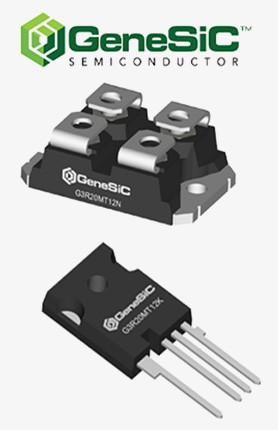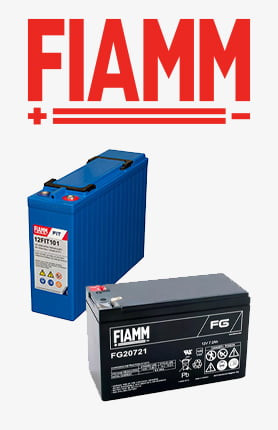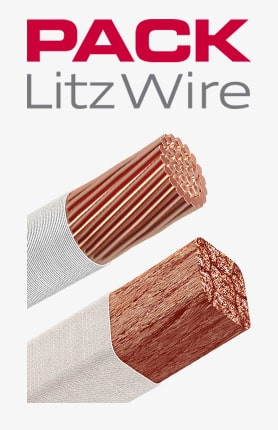-
BackX
-
Components
-
-
Category
-
Semiconductors
- Diodes
- Thyristors
-
Electro-insulated Modules
- Electro-insulated Modules | VISHAY (IR)
- Electro-insulated Modules | INFINEON (EUPEC)
- Electro-insulated Modules | Semikron
- Electro-insulated Modules | POWEREX
- Electro-insulated Modules | IXYS
- Electro-insulated Modules | POSEICO
- Electro-insulated Modules | ABB
- Electro-insulated Modules | TECHSEM
- Go to the subcategory
- Bridge Rectifiers
-
Transistors
- Transistors | GeneSiC
- SiC MOSFET Modules | Mitsubishi
- SiC MOSFET Modules | STARPOWER
- Module SiC MOSFET ABB’s
- IGBT Modules | MITSUBISHI
- Transistor Modules | MITSUBISHI
- MOSFET Modules | MITSUBISHI
- Transistor Modules | ABB
- IGBT Modules | POWEREX
- IGBT Modules | INFINEON (EUPEC)
- Silicon Carbide (SiC) semiconductor elements
- Go to the subcategory
- Gate Drivers
- Power Blocks
- Go to the subcategory
- Electrical Transducers
-
Passive components (capacitors, resistors, fuses, filters)
- Resistors
-
Fuses
- Miniature Fuses for electronic circuits - ABC & AGC Series
- Tubular Fast-acting Fuses
- Time-delay Fuse Links with GL/GG & AM characteristics
- Ultrafast Fuse Links
- Fast-acting Fuses (British & American standard)
- Fast-acting Fuses (European standard)
- Traction Fuses
- High-voltage Fuse Links
- Go to the subcategory
- Capacitors
- EMI Filters
- Supercapacitors
- Power surge protection
- TEMPEST emission revealing filters
- Go to the subcategory
-
Relays and Contactors
- Relays and Contactors - Theory
- 3-Phase AC Semiconductor Relays
- DC Semiconductor Relays
- Controllers, Control Systems and Accessories
- Soft Starters and Reversible Relays
- Electromechanical Relays
- Contactors
- Rotary Switches
-
Single-Phase AC Semiconductor Relays
- AC ONE PHASE RELAYS 1 series| D2425 | D2450
- One phase semiconductor AC relays CWA and CWD series
- One phase semiconductor AC relays CMRA and CMRD series
- One phase semiconductor AC relays - PS series
- Double and quadruple semiconductor AC relays - D24 D, TD24 Q, H12D48 D series
- One phase semiconductor relays - gn series
- Ckr series single phase solid state relays
- One phase AC semiconductor relays for DIN bus - ERDA I ERAA series
- 150A AC single phase relays
- Rail Mountable Solid State Relays With Integrated Heat Sink - ENDA, ERDA1 / ERAA1 series
- Go to the subcategory
- Single-Phase AC Semiconductor Relays for PCBs
- Interface Relays
- Go to the subcategory
- Cores and Other Inductive Components
- Heatsinks, Varistors, Thermal Protection
- Fans
- Air Conditioning, Accessories for Electrical Cabinets, Coolers
-
Batteries, Chargers, Buffer Power Supplies and Inverters
- Batteries, Chargers - Theoretical Description
- Modular Li-ion Battery Building Blocks, Custom Batteries, BMS
- Batteries
- Battery Chargers and Accessories
- Uninterruptible Power Supply and Buffer Power Supplies
- Inverters and Photovoltaic Equipments
- Energy storage
- Fuel cells
- Lithium-ion batteries
- Go to the subcategory
-
Automatics
- Spiralift Lifts
- Futaba Drone Parts
- Limit Switches, Microswitches
- Sensors, Transducers
-
Infrared Thermometers (Pyrometers)
- IR-TE Series - Water-proof Palm-sized Radiation Thermometer
- IR-TA Series - Handheld Type Radiation Thermometer
- IR-H Series - Handheld Type Radiation Thermometer
- IR-BA Series - High-speed Compact Radiation Thermometer
- IR-FA Series - Fiber Optic Radiation Thermometer
- IR-BZ Series - Compact Infrared Thermometers
- Go to the subcategory
- Counters, Time Relays, Panel Meters
- Industrial Protection Devices
- Light and Sound Signalling
- Thermographic Camera
- LED Displays
- Control Equipments
- Go to the subcategory
-
Cables, Litz wires, Conduits, Flexible connections
- Wires
- Cable feedthroughs and couplers
- Litz wires
- Cables for extreme applications
- Sleevings
-
Braids
- Flat Braids
- Round Braids
- Very Flexible Flat Braids
- Very Flexible Round Braids
- Cylindrical Cooper Braids
- Cylindrical Cooper Braids and Sleevings
- Flexible Earthing Connections
- Galvanized and Stainless Steel Cylindrical Braids
- PCV Insulated Copper Braids (temp. up to 85C)
- Flat Aluminium Braids
- Junction Set - Braids and Tubes
- Go to the subcategory
- Traction Equipment
- Cable Terminals
- Flexible Insulated Busbars
- Flexible Multilayer Busbars
- Cable Duct Systems
- Go to the subcategory
- View all categories
-
Semiconductors
-
-
- Suppliers
-
Applications
- CNC Machine Tools
- DC and AC Drives (Inverters)
- Energetics
- Energy bank
- Equipment and Components for Hazardous Areas [Ex]
- Equipment for Distribution, Control and Telecommunications Cabinets
- HVAC Automation
- Induction Heating
- Industrial Automation
- Industrial Protective Devices
- Machines for Drying and Wood Processing
- Machines for Thermoforming Plastics
- Mining, Metallurgy and Foundry
- Motors and Transformers
- Power Supplies (UPS) and Rectifier Systems
- Printing
- Temperature Measurement and Regulation
- Test and Laboratory Measurements
- Tram and Railway Traction
- Welding Machines
-
Assembly
-
-
Inductors
-
-
Induction devices
-
-
Service
-
- Contact
- Zobacz wszystkie kategorie
Flexible Printed Heaters
What are flexible printed heaters?
These are heating elements made by applying conductive pastes (e.g., carbon, silver) onto a thin film (e.g., PET), and then secured with a protective layer. PTC (Positive Temperature Coefficient) versions offer self-temperature...
What are flexible printed heaters?
These are heating elements made by applying conductive pastes...
| Image | View the product | No. Manufacturer | ||||
|---|---|---|---|---|---|---|
| picture_as_pdf |
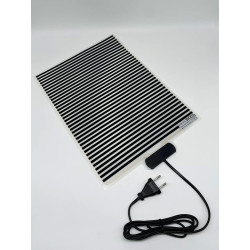
|
ALPER | Alper-004 heated terrarium mat | SEE IT | Alper-004 | On Order |
| picture_as_pdf |
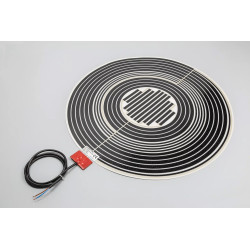
|
ALPER | Alper-005 Mirror Defoggers | SEE IT | Alper-005 | On Order |
| picture_as_pdf |
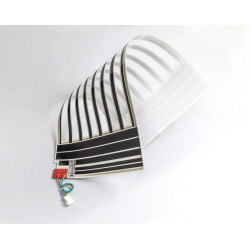
|
ALPER | Alper-006 Polyester Heaters | SEE IT | Alper-006 | On Order |
| picture_as_pdf |

|
ALPER | Alper-007 PTC Ink Heaters | SEE IT | Alper-007 | On Order |
| picture_as_pdf |
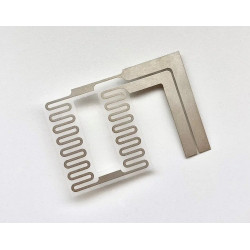
|
ALPER | Alper-008 Silver Ink Heaters | SEE IT | Alper-008 | On Order |
What are flexible printed heaters?
These are heating elements made by applying conductive pastes (e.g., carbon, silver) onto a thin film (e.g., PET), and then secured with a protective layer. PTC (Positive Temperature Coefficient) versions offer self-temperature regulation — once the programmed value is reached, the resistance increases, and the heating self-limits the power. Thanks to printed technology, it is possible to achieve a thickness of 0.2–0.5 mm and a very even power distribution.
Main advantages
- Ultra-thin construction and low mass — easy to install in tight spaces.
- Even heat distribution — no hot spots.
- Ability to freely shape the heating paths and adapt to unusual surfaces.
- Options with self-regulating PTC — safer and simpler to control.
- Low production costs for large series thanks to additive processes (less waste).
Applications
Flexible printed heaters are used, among others, in:
- Household appliances and professional coffee machines (outlet heating, preventing condensation) — thanks to the thin film, integration into casings and aesthetic elements is possible.
- Defrosting and evaporation systems (e.g., de-icing), HVAC, and heat exchangers.
- Medical and laboratory devices, where temperature accuracy is critical.
- Industrial applications: heating pipes, surfaces, sensors, and electronic components.
Types and technologies
Heaters printed with carbon and silver pastes
Standard printed heating elements use carbon pastes (cheaper, flexible) or silver pastes (better conductivity). The paths can be designed to achieve the desired resistance and power distribution.
PTC (self-limiting) printed heaters
PTC heaters contain special inks with a Positive Temperature Coefficient — when the set temperature is reached, the resistance increases, which limits the further rise in temperature and eliminates the need for extensive safety features. This solution is popular where safety and temperature stability are critical.
Self-adhesive heating films and mats
Printed films are often equipped with an adhesive layer and a protective PET film, which facilitates quick mounting on metal, plastic, or composite elements without the need for additional gluing.
How to choose the right flexible printed heater?
- Temperature range and required power: determine the heating rate and maximum operating temperature.
- Surface and shape of the mounting area: do you need a flat film, a ring, a strip, or an element with an unusual shape.
- Substrate material: metal, plastic, glass — this affects thermal conductivity and the mounting method.
- Control and sensors: do you need a thermocouple/RTD, a PID controller, or is a simple on/off switch sufficient.
- Protective finishes and IP rating: the degree of protection against moisture, chemicals, and mechanical damage.
- Certificates and industry requirements: medical, food, ATEX/Ex standards for explosion-hazardous areas (if applicable).
Business benefits
- Reduction of energy consumption thanks to even heating and PTC options.
- Reduction of mass and installation space in end devices.
- Possibility of integration into aesthetic consumer products without visible heaters.
- Faster prototyping and production thanks to printed processes (easier path modification).
FAQ — frequently asked questions
Can printed heaters be cut to size?
In some printed solutions, the paths and panels can be trimmed according to the marked zones (cut lines). Always confirm the possibility of modification with the manufacturer — not all patterns can be safely cut.
How to control the temperature of the heating film?
Thermocouples, RTD sensors, or PID controllers are most often used. In the case of PTC, the material structure itself performs part of the regulatory work, which simplifies the control system.
Are printed films resistant to moisture and chemicals?
This depends on the materials used for production and the protective layer. Versions with an additional protective coating, laminate, or made on special chemically resistant substrates are available. Make sure the selected product meets the application requirements.
Summary
Flexible printed heaters combine form flexibility, control precision, and material efficiency. They are an ideal choice where minimal thickness, aesthetics, and even heating are important. Contact us to receive an offer and samples from trusted manufacturers.

